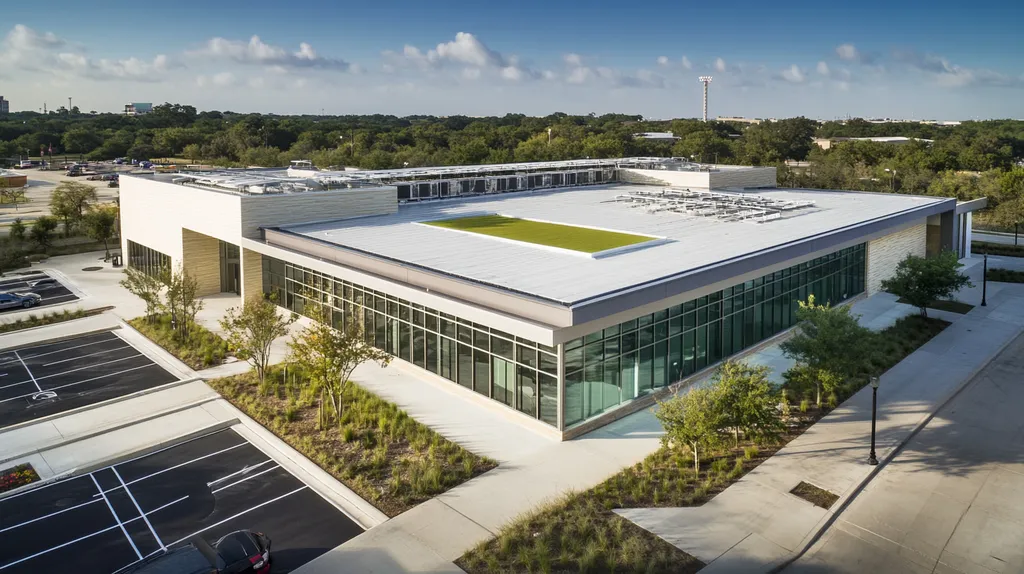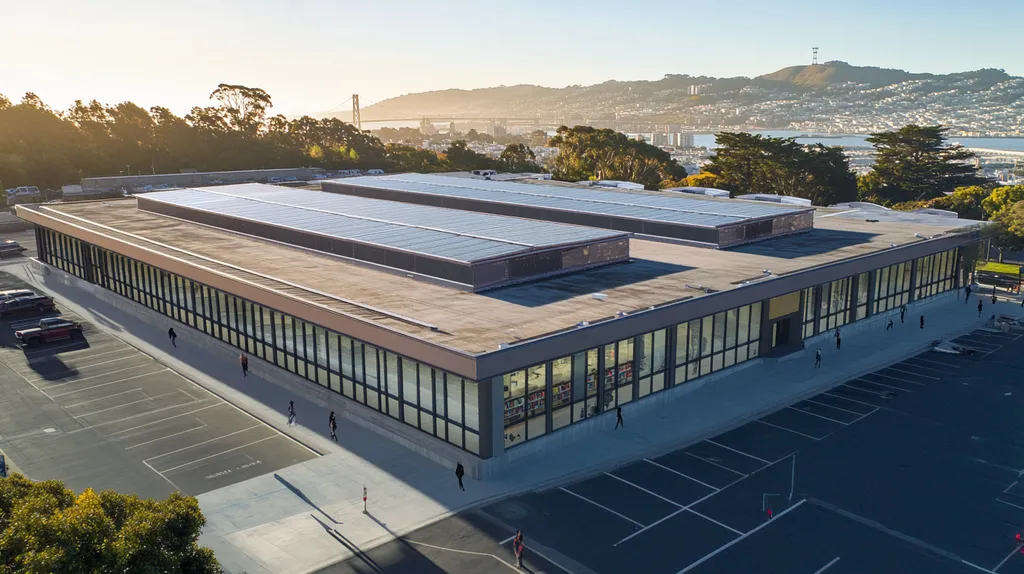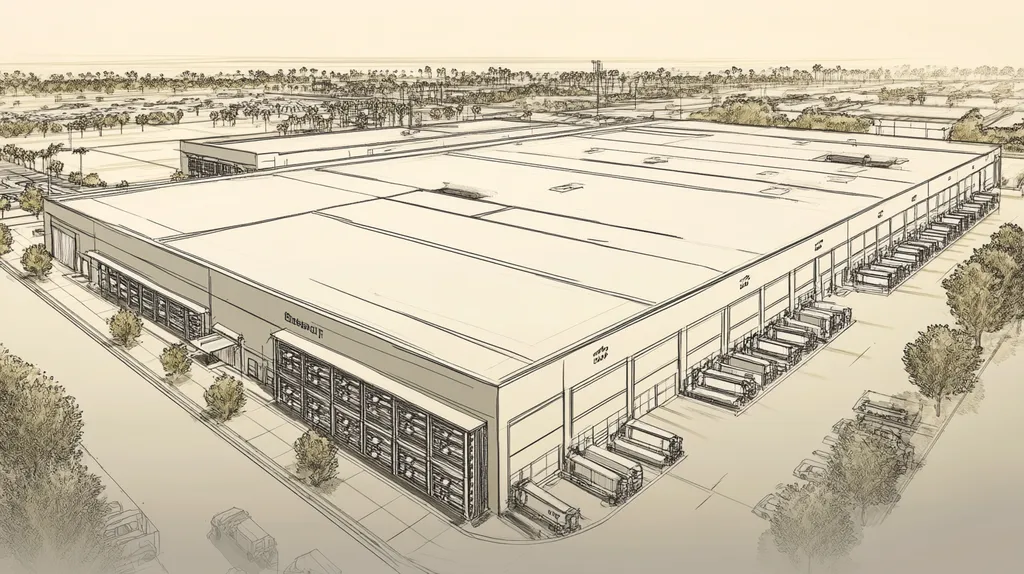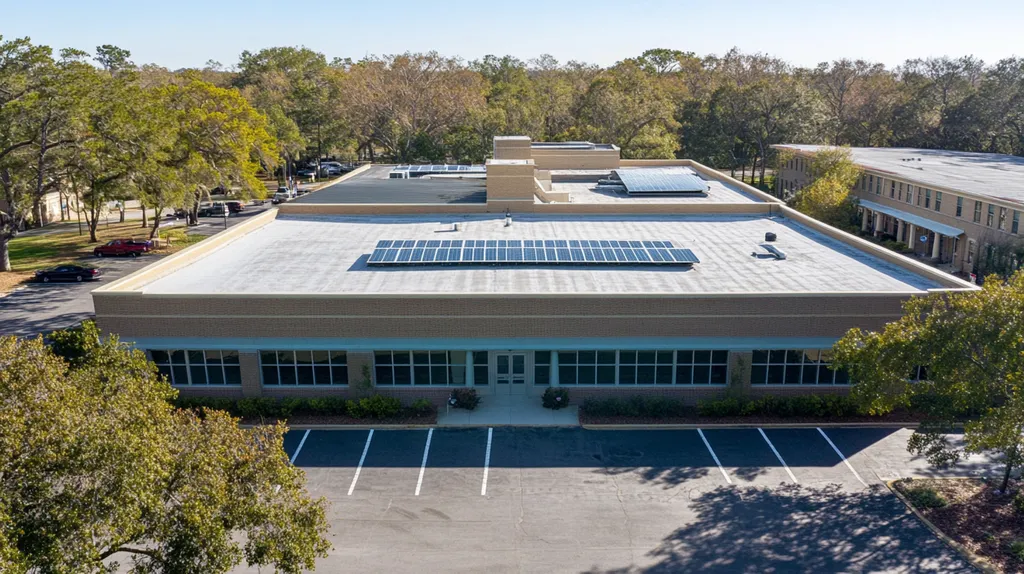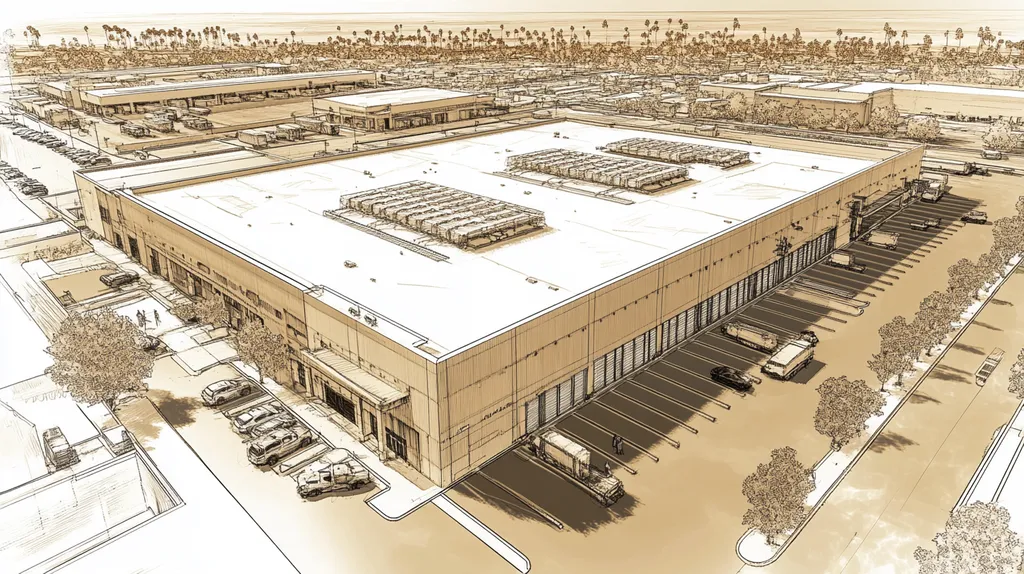Welcome to today’s Battle Royale featuring two roofing heavyweights: “Infrared Thermography” in the east corner versus “Ultrasonic Testing” in the west!
Tonight’s showdown pits these contenders against each other across six punishing rounds designed to test every aspect of their performance for Industrial Roof Structural Integrity.
At stake? Millions in potential costs, decades of building protection, and the critical performance demands of modern commercial and industrial facilities.
Our professional judging panel will evaluate each round on technical merit, real-world performance, and value delivery. After all six rounds, we’ll declare our ultimate champion.
Ladies and gentlemen, facility managers and building owners… it’s time to rumble!
ROUND 1: INITIAL COSTS & INSTALLATION
In today’s industrial landscape, where roof failures can halt operations and cost facilities up to $5,000 per hour in downtime, choosing the right structural integrity assessment method is crucial. Both Infrared Thermography and Ultrasonic Testing offer distinct approaches to roof inspection, each with its own cost implications and implementation challenges.
Material Expenses
Non-destructive testing (NDT) equipment represents a significant capital investment for facility managers. These specialized tools must deliver reliable results while protecting the structural integrity of the roof system. (source: Integrity Reserve)
Infrared thermography systems typically cost between $15,000 to $50,000 for commercial-grade equipment. This investment includes high-resolution thermal cameras, analysis software, and calibration tools essential for accurate moisture detection.
Ultrasonic testing equipment generally ranges from $5,000 to $15,000 for a complete system. The lower cost reflects simpler technology requirements while still providing accurate detection of internal flaws and material degradation.
ADVANTAGE: Ultrasonic Testing
Installation Complexity
The complexity of setup and deployment significantly impacts both immediate costs and operational disruption. Professional certification and training requirements add another layer to implementation considerations.
Infrared thermography requires specific environmental conditions and typically needs facility shutdown during testing. The method demands careful timing to achieve optimal temperature differentials, often requiring night-time operations.
Ultrasonic testing offers greater flexibility in deployment timing and can often be performed during regular operations. The point-by-point nature of testing allows for targeted assessment without facility-wide disruption.
ADVANTAGE: Ultrasonic Testing
Project Timeline
Timeline efficiency directly affects both implementation costs and facility operations. Faster assessment methods can minimize disruption while ensuring thorough evaluation.
Infrared thermography scanning can cover large areas quickly, typically completing a 50,000-square-foot roof assessment in 4-6 hours. However, optimal testing conditions may extend the overall project timeline.
Ultrasonic testing proceeds methodically but allows for continuous facility operation. While individual point measurements take longer, the ability to test during normal operations often results in shorter overall project durations.
ADVANTAGE: Ultrasonic Testing
ROUND 1 WINNER: Ultrasonic Testing
ROUND 2: DURABILITY & LIFESPAN
When managing industrial roofing assets worth millions of dollars, understanding how assessment methods impact long-term performance becomes critical. Recent industry data shows that 78% of premature roof failures could have been prevented through proper structural evaluation techniques. As facility managers face increasing pressure to extend roof lifespans while controlling costs, choosing between infrared thermography and ultrasonic testing can significantly impact long-term outcomes.
Assessment Accuracy
Various tools and techniques determine a roof’s structural integrity, with each method offering distinct advantages in accuracy and reliability. Infrared thermography excels at detecting surface-level moisture infiltration and thermal anomalies but can miss deeper structural issues that affect long-term performance. (source: Encorus Group)
Ultrasonic testing provides detailed insights into material thickness, internal flaws, and structural composition. This comprehensive approach helps identify potential failure points before they develop into major issues, leading to more accurate lifespan predictions.
ADVANTAGE: Ultrasonic Testing
Performance Monitoring
Regular monitoring ensures optimal roof performance throughout its service life. Infrared thermography offers quick, broad-area scanning capabilities that make it ideal for periodic checkups, but its effectiveness depends heavily on environmental conditions and time of day.
Ultrasonic testing delivers consistent results regardless of weather conditions or timing. The method’s ability to track material degradation over time provides more reliable trending data for long-term performance analysis.
ADVANTAGE: Ultrasonic Testing
Risk Mitigation
Effective risk management requires understanding both immediate and potential future threats to roof integrity. Infrared scanning identifies current moisture issues but may overlook developing structural weaknesses that could lead to catastrophic failures.
Ultrasonic assessment provides early warning of material fatigue and degradation before visible signs appear. This predictive capability allows facility managers to address problems proactively, significantly reducing the risk of unexpected failures.
ADVANTAGE: Ultrasonic Testing
ROUND 2 WINNER: Ultrasonic Testing
ROUND 3: PERFORMANCE FACTORS
In today’s industrial environment, roof failures can lead to devastating consequences beyond mere repair costs. Recent data shows that 40% of industrial facilities experience unexpected downtime due to inadequate roof assessment methods, resulting in millions in lost productivity. Understanding the performance capabilities of different inspection technologies has become crucial for facility managers seeking to protect their assets.
Detection Capability
A commercial roofing condition assessment must evaluate multiple aspects of roof integrity to provide actionable insights. Modern inspection methods need to identify not just surface issues, but also hidden structural weaknesses that could lead to failure. (source: ABSI)
Infrared thermography excels at identifying moisture infiltration and thermal bridging issues across large roof sections. Its ability to create comprehensive thermal maps allows inspectors to quickly identify problem areas that require further investigation.
Ultrasonic testing provides precise measurements of material thickness and can detect delamination, voids, and structural weaknesses that thermal imaging might miss. However, its point-by-point nature means complete coverage requires more time and effort.
ADVANTAGE: Infrared Thermography
Environmental Adaptability
Weather conditions and environmental factors significantly impact inspection reliability. Understanding these limitations is crucial for maintaining consistent assessment quality throughout the year.
Infrared thermography requires specific temperature differentials and clear weather conditions to produce accurate results. Night inspections often yield better results, but this timing requirement can complicate scheduling.
Ultrasonic testing maintains consistent accuracy regardless of weather conditions or time of day. This reliability makes it particularly valuable for facilities in regions with challenging weather patterns or tight maintenance schedules.
ADVANTAGE: Ultrasonic Testing
Data Analysis Capabilities
The ability to interpret and act on inspection data determines the ultimate value of any assessment method. Modern facility management demands clear, actionable insights to support maintenance decisions.
Infrared thermography generates visual heat maps that are intuitive to interpret and can be easily shared with stakeholders. However, quantifying the severity of detected issues requires significant expertise.
Ultrasonic testing provides precise numerical data that can be tracked over time to monitor degradation rates. This quantitative approach enables more accurate prediction of maintenance needs and remaining service life.
ADVANTAGE: Ultrasonic Testing
ROUND 3 WINNER: Ultrasonic Testing
ROUND 4: MAINTENANCE REQUIREMENTS
In today’s industrial environment, roof maintenance failures cost facilities an average of $3.50 per square foot annually in emergency repairs and operational disruptions. With 40% of commercial roofs requiring premature replacement due to inadequate maintenance programs, choosing the right inspection method becomes crucial for long-term asset protection.
Equipment Maintenance
Infrared thermography requires minimal equipment maintenance, with annual calibration typically sufficient for most commercial-grade thermal cameras. The systems are robust and resistant to normal wear, though lens cleaning and protective case maintenance are essential for optimal performance.
Infrared scanning helps locate areas of suspected wet materials, enabling targeted maintenance planning that maximizes efficiency. The technology’s ability to detect elevated moisture content makes it particularly valuable for ongoing monitoring programs. (source: Whole Building Design Guide)
Ultrasonic testing equipment demands more frequent calibration and component replacement. Transducers require regular inspection and occasional replacement, while coupling materials must be monitored and replenished consistently.
ADVANTAGE: Infrared Thermography
Personnel Requirements
Infrared thermography requires initial certification but minimal ongoing training. Most technicians can maintain proficiency through regular use, with periodic updates focused on software improvements and new analysis techniques.
Ultrasonic testing demands continuous technical training and skill development. The complexity of wave analysis and material science requires regular certification updates and hands-on practice to maintain testing accuracy.
ADVANTAGE: Infrared Thermography
Operational Impact
Infrared inspections can typically be conducted without disrupting facility operations. The non-contact nature of thermal scanning allows maintenance teams to assess large areas quickly while maintaining normal business activities.
Ultrasonic testing requires direct contact with roof surfaces, often necessitating temporary shutdowns of affected areas. This point-by-point inspection method can significantly impact operational continuity during maintenance periods.
ADVANTAGE: Infrared Thermography
ROUND 4 WINNER: Infrared Thermography
ROUND 5: SUSTAINABILITY CREDENTIALS
In an era where environmental responsibility intersects with operational efficiency, industrial facilities face mounting pressure to adopt sustainable roofing practices. Recent industry data shows that inefficient roof systems account for up to 40% of building energy losses, costing facilities millions in wasted energy while contributing to their carbon footprint. The choice between infrared thermography and ultrasonic testing can significantly impact both environmental compliance and operational sustainability.
Energy Efficiency Detection
Identifying energy loss through roofing systems has become crucial as facilities face stricter environmental regulations and rising energy costs. Proper detection methods can help facilities reduce their carbon footprint while saving thousands in energy costs.
Infrared thermography excels at identifying thermal bridges, insulation gaps, and heat loss patterns across large roof sections. These capabilities enable facilities to pinpoint and address energy efficiency issues before they impact operational costs.
Ultrasonic testing, while effective for structural analysis, cannot directly detect thermal inefficiencies or energy loss patterns. Its focus remains primarily on material integrity rather than energy performance.
ADVANTAGE: Infrared Thermography
Environmental Impact Assessment
Modern roof inspection methods must balance effectiveness with environmental responsibility. Capacitance testing and infrared thermography require skilled investigators to locate areas of suspected wet materials, enabling targeted repairs that minimize waste. (source: WBDG)
Infrared thermography operates without physical contact or chemical agents, making it environmentally neutral. Its ability to cover large areas quickly reduces the carbon footprint associated with extended inspection periods.
Ultrasonic testing requires coupling materials and may need periodic probe replacement, generating some waste. However, its precise nature helps minimize unnecessary repairs and material replacement.
ADVANTAGE: Infrared Thermography
Lifecycle Optimization
Extending roof system lifespans through effective inspection methods directly impacts sustainability by reducing material waste and replacement frequency. Proper assessment techniques can double the effective life of roofing systems.
Infrared thermography’s ability to detect issues early helps prevent premature system failure and unnecessary replacements. This proactive approach supports sustainable lifecycle management while reducing landfill impact.
Ultrasonic testing provides detailed material analysis that can extend component life through targeted maintenance. However, its point-by-point nature may miss developing issues that could lead to premature replacement.
ADVANTAGE: Infrared Thermography
ROUND 5 WINNER: Infrared Thermography
ROUND 6: SPECIALIZED APPLICATIONS
In today’s complex industrial environment, specialized roofing applications demand precise assessment methods to prevent catastrophic failures. With over 60% of industrial facilities requiring customized roofing solutions due to unique operational demands, choosing the right inspection technology becomes critical for maintaining structural integrity while supporting specific facility requirements.
High-Temperature Environments
Industrial facilities with extreme temperature variations present unique challenges for roof assessment. Processing plants, manufacturing facilities, and data centers require inspection methods that can accurately evaluate structural integrity under demanding thermal conditions.
Infrared thermography struggles to provide accurate readings in high-temperature environments where ambient heat signatures mask potential issues. The method’s reliance on temperature differentials becomes problematic when baseline temperatures exceed normal operating ranges.
Ultrasonic testing maintains consistent accuracy regardless of ambient temperatures, providing reliable structural data even in extreme conditions. The method’s independence from thermal conditions makes it particularly valuable for facilities with complex heating and cooling requirements.
ADVANTAGE: Ultrasonic Testing
Chemical and Corrosive Environments
Facilities handling aggressive chemicals or corrosive materials require specialized inspection approaches to monitor roof degradation. Early detection of material breakdown becomes essential for preventing containment failures and ensuring workplace safety.
Infrared thermography can detect thermal patterns indicating chemical damage but cannot directly measure material degradation or thickness changes. While useful for identifying areas of concern, it provides limited data about actual structural impacts.
Ultrasonic testing excels at measuring material thickness changes and internal degradation caused by chemical exposure. This capability allows facilities to track corrosion rates and predict remaining service life with high accuracy.
ADVANTAGE: Ultrasonic Testing
Complex Multi-Layer Systems
Modern industrial roofs often incorporate multiple layers of materials, each serving specific functions from waterproofing to thermal regulation. Accurate assessment of these complex systems requires inspection methods that can evaluate all layers effectively.
Infrared thermography excels at identifying moisture infiltration and insulation issues in layered systems. The technology can detect wet materials and compromised areas through thermal imaging, enabling targeted maintenance planning. (source: WBDG)
Ultrasonic testing provides detailed analysis of individual layer integrity but requires more time to assess complex systems. While highly accurate, the point-by-point nature of testing can make comprehensive evaluation of large multi-layer roofs time-consuming.
ADVANTAGE: Infrared Thermography
ROUND 6 WINNER: Ultrasonic Testing
AND THE WINNER IS…
After six punishing rounds of technical evaluation, with millions in facility assets hanging in the balance, we have our verdict!
In a decisive 4-2 victory, ULTRASONIC TESTING claims the championship belt! This technological heavyweight dominated the crucial categories of Initial Costs, Durability & Lifespan, Performance Factors, and Specialized Applications, showcasing superior accuracy, reliability, and adaptability across challenging industrial environments.
But don’t count Infrared Thermography out! This veteran contender proved its worth by clinching both the Maintenance Requirements and Sustainability rounds. For facilities prioritizing energy efficiency or requiring rapid, non-contact inspections across large areas, IR scanning remains a formidable choice.
IMPORTANT NOTICE: Every industrial facility faces unique challenges based on local climate, operational demands, and specific roofing systems. This analysis provides general guidance but cannot account for all variables. Property owners and facility managers should consult qualified roofing professionals who can evaluate their specific situation and recommend the most appropriate inspection methods.
Ladies and gentlemen, in the high-stakes world of industrial roofing, victory goes not to those who blindly follow the champion, but to those who strategically match their facility’s specific needs with the right technical contender. Choose wisely – your roof’s future depends on it!
FREQUENTLY ASKED QUESTIONS
Q. What are the costs associated with assessing a commercial roof?
A. The costs vary between infrared thermography and ultrasonic testing. Infrared systems cost between $15,000 to $50,000, while ultrasonic testing equipment ranges from $5,000 to $15,000. It’s essential to evaluate both immediate costs and potential disruptions when selecting the right method for your roof.
Q. How does infrared thermography affect the durability of an industrial roof?
A. Infrared thermography can identify moisture infiltration and thermal anomalies, but may overlook deeper structural issues. It’s crucial for identifying current problems, helping to mitigate the risk of premature failure and ultimately extend the roof’s lifespan.
Q. Which inspection method has better detection capabilities for commercial roofs?
A. Infrared thermography excels at detecting moisture and thermal bridging across large areas. However, ultrasonic testing offers precise measurements of material thickness and internal flaws, identifying issues that may cause future failures. Both methods provide invaluable insights for effective roof assessment.
Q. What are the maintenance requirements for each inspection method?
A. Infrared thermography requires minimal maintenance with annual calibration, while ultrasonic testing demands more frequent upkeep and component replacement. Understanding these requirements helps facility managers plan effective maintenance schedules without operational disruptions.
Q. How does sustainability play a role in roof inspections?
A. Sustainability is crucial as it can significantly reduce carbon footprints. Infrared thermography detects energy inefficiencies, enabling early interventions that conserve resources. In contrast, ultrasonic testing focuses on structural integrity but may not directly address energy performance.
Q. Which inspection method works best in challenging environments?
A. Ultrasonic testing proves advantageous in extreme temperatures or corrosive conditions, providing reliable data regardless of external factors. In contrast, infrared thermography may struggle to deliver accurate results in high-temperature settings, making understanding your facility’s needs essential.
Q. Can both methods be used together for assessing an industrial roof?
A. Yes, using both methods in tandem provides a comprehensive assessment. Infrared thermography can identify surface issues and moisture, while ultrasonic testing allows for deeper analysis of material integrity. Combining these approaches enhances overall roof evaluation and maintenance strategies.

